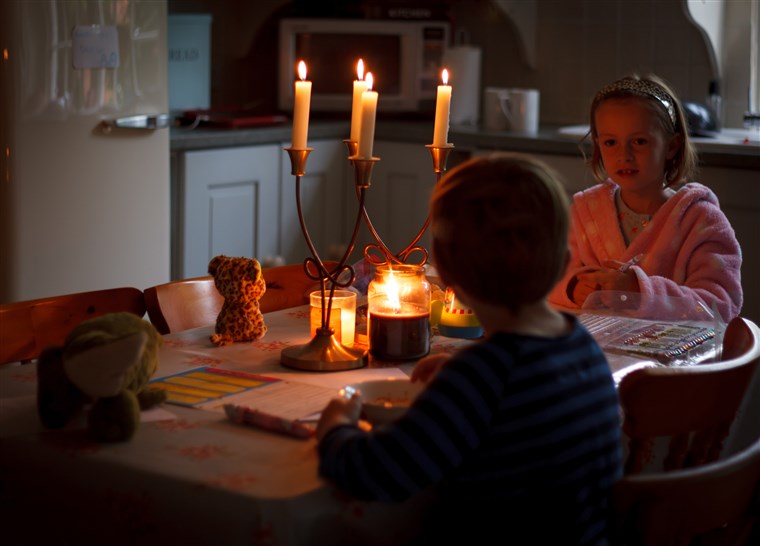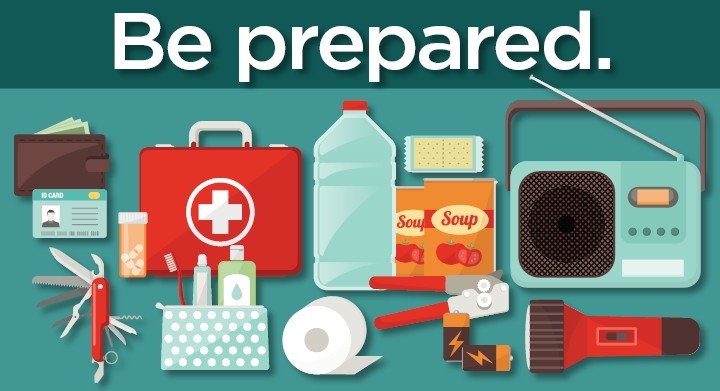Thousand Oaks received one of its most intense windstorms this week. The resulting power outages left a lot of people in the dark and unprepared. If a power outage is 2 hours or less, you need not be concerned about losing your perishable foods. For prolonged power outages, though, there are steps you can take to minimize food loss and to keep all members of your household as comfortable as possible.

Energy Conservation Recommendations
- Turn off lights and computers when not in use.
- Wash clothes in cold water if possible; wash only full loads and clean the dryer’s lint trap after each use.
- When using a dishwasher, wash full loads and use the light cycle. If possible, use the rinse only cycle and turn off the high temperature rinse option. When the regular wash cycle is done, just open the dishwasher door to allow the dishes to air dry.
- Replace incandescent light bulbs with energy-efficient compact fluorescent lights.
Planning Ahead
- To help preserve your food, keep the following supplies in your home:
- One or more coolers-Inexpensive Styrofoam coolers work well.
- Ice: surrounding your food with ice in a cooler or in the refrigerator will keep food colder for a longer period of time during a prolonged power outage.
- A digital quick-response thermometer: these thermometers allow you to quickly check the internal temperatures of food to ensure they are cold enough to use safely.
- Get an emergency supply kit with these supplies in case of a prolonged or widespread power outage. If someone in your home is dependent on electric-powered, life-sustaining equipment, remember to include backup power in your evacuation plan.
- Keep your car’s gas tank full.
During:
Keep food as safe as possible.
- Keep refrigerator and freezer doors closed as much as possible. First use perishable food from the refrigerator. An unopened refrigerator will keep foods cold for about 4 hours.
- Then use food from the freezer. A full freezer will keep the temperature for about 48 hours (24 hours if it is half full) if the door remains closed.
- Use your non-perishable foods and staples after using food from the refrigerator and freezer.
- If it looks like the power outage will continue beyond a day, prepare a cooler with ice for your freezer items.
- Keep food in a dry, cool spot and keep it covered at all times.
Electrical equipment:
- Turn off and unplug all unnecessary electrical equipment, including sensitive electronics.
- Turn off or disconnect any appliances (like stoves), equipment or electronics you were using when the power went out. When power comes back on, surges or spikes can damage equipment.
- Leave one light turned on so you’ll know when the power comes back on.
- Eliminate unnecessary travel, especially by car. Traffic lights will be out and roads will be congested.
After:
- Do not touch any electrical power lines and keep your family away from them. Report downed power lines to the appropriate officials in your area.
- Throw out unsafe food.
- Throw away any food that has been exposed to temperatures 40° F (4° C) for 2 hours or more or that has an unusual odor, color or texture. When in doubt, throw it out!
- Never taste food or rely on appearance or odor to determine its safety. Some foods may look and smell fine, but if they have been at room temperature too long, bacteria causing food-borne illnesses can start growing quickly. Some types of bacteria produce toxins that cannot be destroyed by cooking.
- If food in the freezer is colder than 40° F and has ice crystals on it, you can refreeze it.
- If you are not sure food is cold enough, take its temperature with the food thermometer. Throw out any foods (meat, poultry, fish, eggs and leftovers) that have been exposed to temperatures higher than 40° F (4° C) for 2 hours or more, and any food that has an unusual odor, color or texture, or feels warm to touch.
Caution: Carbon Monoxide Kills
- Never use a generator, grill, camp stove or other gasoline, propane, natural gas or charcoal-burning devices inside a home, garage, basement, crawlspace or any partially enclosed area. Locate unit away from doors, windows and vents that could allow carbon monoxide to come indoors.
- The primary hazards to avoid when using alternate sources for electricity, heating or cooking are carbon monoxide poisoning, electric shock and fire.
- Install carbon monoxide alarms in central locations on every level of your home and outside sleeping areas to provide early warning of accumulating carbon monoxide.
- If the carbon monoxide alarm sounds, move quickly to a fresh air location outdoors or by an open window or door.
- Call for help from the fresh air location and remain there until emergency personnel arrive to assist you.


